Why make a forest?
I was born in Buffalo, NY and then moved to Durham, North Carolina after college. Both of these areas were less populated and had lots of forested areas near the urban centers. South Florida, I soon discovered, had hardly any, due to the dense population and poor land management/over development.
I really missed the woods! So, I decided to make my own.
I also have a house that faces west, so the afternoon sun and lack of shade made it unbearable for a good part of the day. The only plants in my front yard at that time were a nasty Brazilian Pepper and a sad looking Queen Palm. Ick. Add to that a scraggly lawn that required bi-weekly irrigation due to my sandy location on the east side of town. This was not only ugly, but unacceptable to me on many levels. (The Brazilian Pepper and Queen Palm were the first to go.)
One of the scariest things I ever did was kill my front lawn, but it was one of the best things I ever did! I wanted no lawn maintenance in favor of tree/shrub/groundcover maintenance, which requires much less. So, I started planting trees, lots and lots of them, along with shrubs and groundcovers. I also mulched the area well to control the weeds.
Then, I watched it grow…

25 years later, I have created my own urban forest on 1/4 acre. The transformation is remarkable, and although it’s clearly outside of the box and maybe not for everyone, I believe it is the way of the future. We simply can’t continue with the unsustainable landscaping designs and practices we now have.
So, here’s my recipe for a forest
-
Plant trees, lots of them, mostly native and many different species.
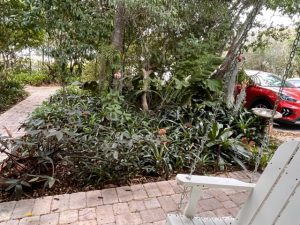
-
Plant trees close together. Start at 10 feet apart or even less. Mimic natural forests.
-
Plant both canopy trees and understory, or sub-canopy trees.
-
Be sure that you mulch deeply to deter weeds while your shade grows, and pull unwanted vegetation.
-
Make structural pruning cuts while young, only if needed. Never top a young tree. Remember, trees planted close together will grow straighter and narrower, just like in the forest.
I have my trees trimmed by a certified arborist every few years once they are too big for me to do myself. I never have to mow!
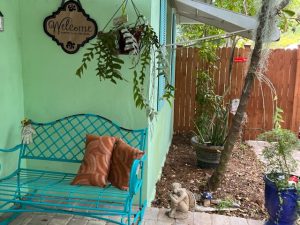
-
Mimic the forest; leave the leaves where they drop. Leaves are food and build soil structure. Little to no fertilizer will be needed. Water only to establish, and then only when plants show stress. Eventually, no water will be needed. I never have to use pesticides, as the birds and the bio-diversity help to keep insects under control.
-
Plant smaller shrubs or ground cover, mount orchids, and have fun with it. Don’t try to grow grass beneath trees.

-
Never plant large trees closer than 15-20 feet from structures. If you don’t have room for large canopy trees, plant small and medium sized ones, but more of them. Three small-medium sized trees are equivalent in carbon sequestration/habitat/shade.
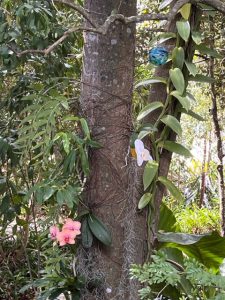
Vanilla and Phalaenopis orchids growing on a Paradise Tree -
If you want fruit trees, place them in the sunniest areas or near the edges.
Benefits of your urban forest
Trees planted closely together protect each other from storms.
Trees protect your home too, by moving air up and around your roof, making a wind-break.

Trees cool your yard and home.
Trees heal the earth by absorbing carbon and releasing oxygen.
The shade produced by your trees will make outdoor living and entertaining a pleasure.

Enjoy less maintenance and more enjoyment.
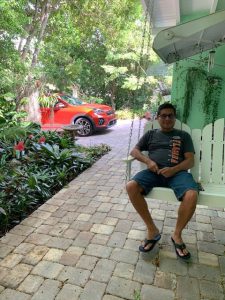
You will be amazed at the wonderful birds, butterflies and other beneficial wildlife that will take refuge in your urban oasis. Your mini-forest will only get more beautiful and interesting over time.
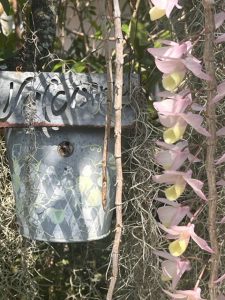
Your forest will transform over the years. It takes at least 5-10 years to start to see it take shape. Try to use your mind’s eye to envision it grown. The time goes by quickly, and remember that we can’t buy time, so plant now!
Watching your forest grow and change is something that will bring you hours of joy and is a great way to help heal the planet.
Perhaps you’re not as passionate as I am about being near the forest, but please, plant more trees.
Here’s a great resource to learn more about why urban forests are important:
 7
7
